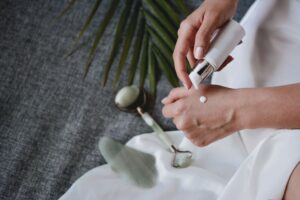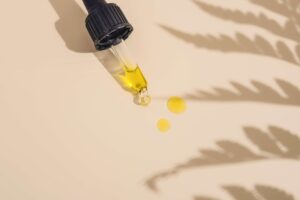What You Need to Know

In the world of skincare and cosmetics, the term “non-comedogenic” is often used to describe products that won’t clog your pores or lead to breakouts. For those who struggle with acne-prone or sensitive skin, non-comedogenic products can be a beacon of hope. But, what exactly does non-comedogenic mean, and can you trust these claims? In this beauty blog, we will decode non-comedogenic claims, explore their significance, and help you make informed decisions about the products you put on your skin.
Understanding Comedogenicity
To begin our journey into the world of non-comedogenic claims, we first need to understand comedogenicity. Comedones are small, non-inflammatory acne lesions that can develop when hair follicles become clogged with oil, dead skin cells, and other impurities. There are two main types of comedones:
- Blackheads (Open Comedones): These occur when the clogged pore is open at the surface and exposed to air, causing the contents to oxidize and turn dark.
- Whiteheads (Closed Comedones): These develop when the pore is closed at the surface, preventing the contents from oxidizing, so they appear white or skin-colored.
Comedogenicity refers to a substance’s potential to cause comedones, which is measured on a scale from 0 to 5, with 0 being non-comedogenic (meaning it won’t clog pores) and 5 being highly comedogenic (likely to clog pores).
The Promise of Non-Comedogenic Products
Non-comedogenic skincare and cosmetic products are formulated to reduce the risk of clogging pores and causing breakouts. These products are typically designed with ingredients that have a low comedogenic rating, and they often proudly display “non-comedogenic” claims on their packaging.
The promise of non-comedogenic products is alluring, especially for individuals with acne-prone or sensitive skin. These products suggest that you can enjoy the benefits of skincare and makeup without the fear of exacerbating existing skin issues or developing new ones.
The Non-Comedogenic Label: Fact or Fiction?
While the term “non-comedogenic” is widely used and trusted, it’s essential to acknowledge that its interpretation and regulation can be somewhat ambiguous. Here’s what you need to consider:
- Not Regulated by the FDA: The U.S. Food and Drug Administration (FDA) does not regulate the term “non-comedogenic.” This means that manufacturers can label their products as such without adhering to specific testing or standards.
- Varying Comedogenicity Ratings: Ingredients that receive comedogenicity ratings are often tested individually. However, in a product, these ingredients interact with one another, which can affect their comedogenic potential differently. This means that a product’s overall comedogenicity may not accurately reflect the sum of its individual ingredient ratings.
- Individual Skin Variability: Everyone’s skin is unique, and what may be comedogenic for one person may not be for another. Skin type, genetics, and other factors play a significant role in how your skin responds to products.
Evaluating Non-Comedogenic Claims
When evaluating non-comedogenic claims on skincare and cosmetic products, consider the following factors:
- Ingredient List: Examine the product’s ingredient list to see if it contains ingredients that are typically considered non-comedogenic, like hyaluronic acid, glycerin, or certain silicone derivatives. Avoid products with known comedogenic ingredients high on the list.
- Testing on Your Skin: The best way to determine if a product is non-comedogenic for your skin is to test it. Apply a small amount to a discreet area and monitor your skin’s reaction. If you notice breakouts or irritation, discontinue use.
- Consulting a Dermatologist: If you have persistent acne concerns or are unsure about which products to use, consider consulting a dermatologist. They can provide personalized recommendations based on your skin type and concerns.
- Patch Testing: When trying a new product, consider patch testing on a small area of your face or body for several days to see how your skin responds.
- Reading Reviews: While individual experiences can vary, reading customer reviews and testimonials can provide insights into how others with similar skin types have reacted to the product.
The Importance of a Holistic Skincare Routine
Non-comedogenic products are an excellent starting point for managing acne-prone or sensitive skin. However, it’s crucial to remember that skincare is not one-size-fits-all. A holistic approach to skincare includes:
- Cleansing: Regular cleansing helps remove impurities, excess oil, and makeup that can contribute to clogged pores.
- Exfoliation: Exfoliating can help remove dead skin cells, preventing them from accumulating and clogging pores. Be gentle, as over-exfoliation can irritate the skin.
- Moisturizing: Even if you have oily skin, using a non-comedogenic moisturizer can help maintain skin health and prevent it from overproducing oil.
- Sun Protection: Using a non-comedogenic sunscreen is crucial to prevent sun damage and protect your skin.
- Diet and Hydration: Maintaining a balanced diet and staying hydrated are integral parts of healthy skin.
- Stress Management: High stress levels can exacerbate skin conditions. Incorporating stress management techniques into your daily routine can help.

Non-comedogenic products offer promise for those seeking skincare and cosmetics that won’t clog their pores or cause breakouts. However, it’s essential to approach these claims with a balanced perspective. Understanding your skin’s unique needs, reading product labels, testing products, and consulting with a dermatologist can all contribute to a more effective and personalized skincare routine. In the journey to beautiful, healthy skin, non-comedogenic claims are a valuable tool, but they are just one piece of the skincare puzzle.

